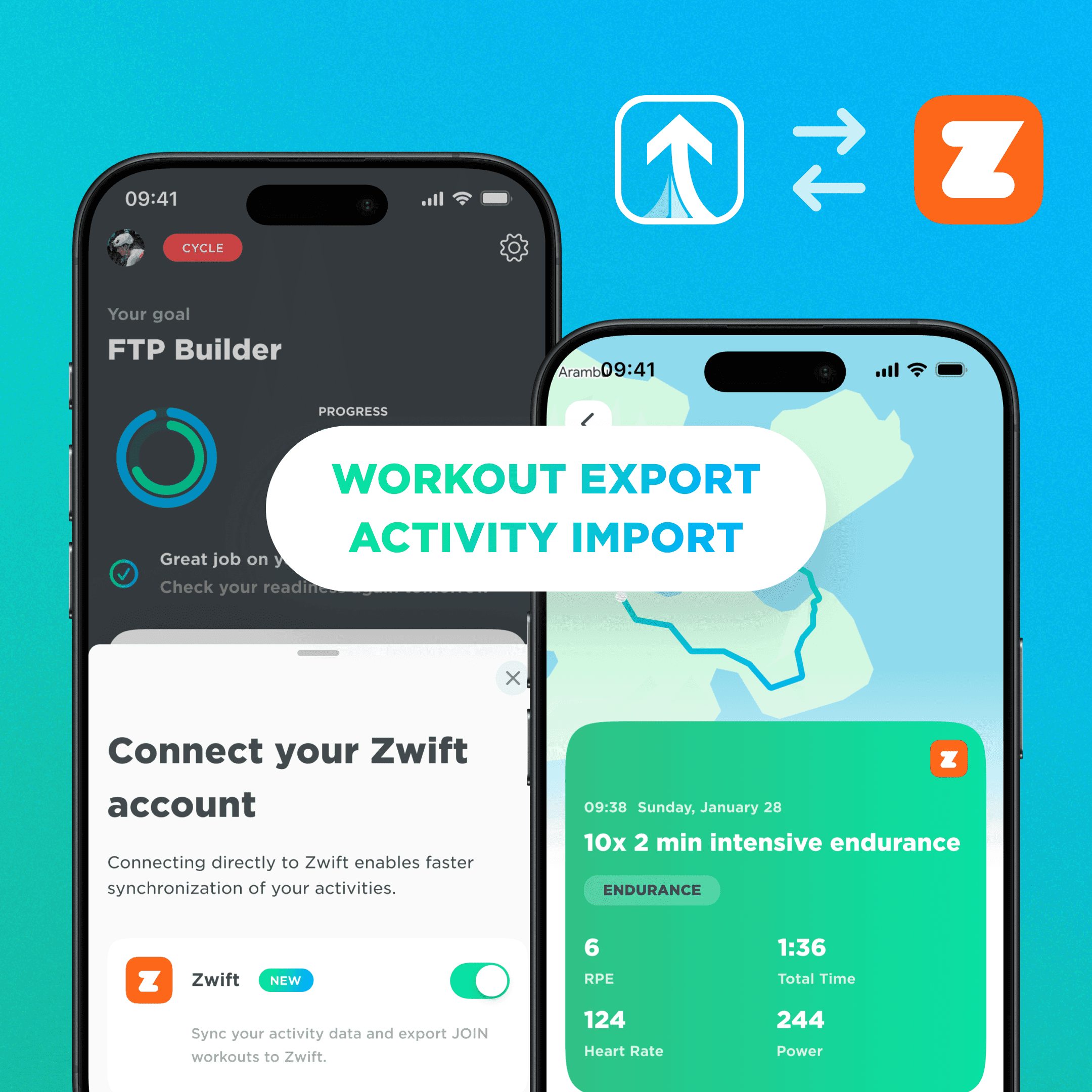What can I do with the 'Training stress score'?

May 11, 2020

What can I do with the 'Training stress score'?
May 11, 2020

What can I do with the 'Training stress score'?

May 11, 2020

What can I do with the 'Training stress score'?
What does it mean and how can it help you to improve? The idea of training is to give the body a stimulus. A workout causes fatigue in the body after which the body realizes that the next time it needs to be better prepared for such a stimulus. This principle is also explained in 'The basics of training'. During the recovery from a workout your body adapts and the fitness level improves. Depending on the intensity of the training you will need to rest for a certain period of time before you can start the next training session. To bring this training principle into practice effectively, it is important to evaluate how hard a training session was. Of course, training sessions come in all shapes and sizes. There are short, intensive training sessions and longer, extensive training sessions, but there are also a lot in between. With so many different types of training it seems almost impossible to compare them with each other. Fortunately, the Training Stress Score (TSS) has been devised to do that for you.
Intensity Factor x duration
The idea of this is quite simple. The formula is to multiply the Intensity Factor (IF) by the duration of the ride in hours and multiply it by 100.
One hour of cycling at your FTP-level (Functional Threshold Power) based on normalized power equals to a TSS of 100. So two hours at 50% of your FTP would also result in a TSS of 100 and 30 minutes at double your FTP (which is humanly impossible) would also result in a score of 100 points.
With this number you can compare a short intensive training with a long extensive endurance training and their impacts on your body. All training stress scores of the last few weeks or months give you a good indication of how much you are actually doing. In the era before the power meters and TSS, the number of hours of the last few weeks or months was simply added up without taking the intensity into account. This often resulted in more and more training hours at a lower intensity, but less training hours at a higher intensity.
Training load
Increasing the training load in the right way is one of the most difficult concepts of training. First of all, you have to time a training session right. When the body has not recovered enough from the previous workout, the next workout only leads to more fatigue in the body. In fact, if a workout was so heavy that a long recovery period was needed, then the body will improve by very little. The training stress score is a good way to monitor the training load and helps to prevent you from starting to do too much. However, there is still one important point to be noted. When two training sessions lead to the same training stress score it does not mean that the effect of both training sessions is the same. A short strength training can have the same TSS as a long slow ride to train fat burning. The training stress score is the same but the effect of the training and the way the body adapts is totally different. For this reason it is still important to monitor both the intensity factor and the training stress score when looking at the training load.
How to get better?
Getting better is all about timing. There are actually no good or bad workouts, there is only a bad combination or the wrong workout at the wrong moment. The path towards progress is therefore a training plan with the right training stimulus taking into account to your level, goal and available time. To help you with that we developed an algorithm in the JOIN Cycling application. It provides you with a highly flexible training plan to makes sure you get the most out of your rides. You can download JOIN in the App Store and Play store. Or check this page for more info.
What can I do with the 'Training stress score'?
What does it mean and how can it help you to improve? The idea of training is to give the body a stimulus. A workout causes fatigue in the body after which the body realizes that the next time it needs to be better prepared for such a stimulus. This principle is also explained in 'The basics of training'. During the recovery from a workout your body adapts and the fitness level improves. Depending on the intensity of the training you will need to rest for a certain period of time before you can start the next training session. To bring this training principle into practice effectively, it is important to evaluate how hard a training session was. Of course, training sessions come in all shapes and sizes. There are short, intensive training sessions and longer, extensive training sessions, but there are also a lot in between. With so many different types of training it seems almost impossible to compare them with each other. Fortunately, the Training Stress Score (TSS) has been devised to do that for you.
Intensity Factor x duration
The idea of this is quite simple. The formula is to multiply the Intensity Factor (IF) by the duration of the ride in hours and multiply it by 100.
One hour of cycling at your FTP-level (Functional Threshold Power) based on normalized power equals to a TSS of 100. So two hours at 50% of your FTP would also result in a TSS of 100 and 30 minutes at double your FTP (which is humanly impossible) would also result in a score of 100 points.
With this number you can compare a short intensive training with a long extensive endurance training and their impacts on your body. All training stress scores of the last few weeks or months give you a good indication of how much you are actually doing. In the era before the power meters and TSS, the number of hours of the last few weeks or months was simply added up without taking the intensity into account. This often resulted in more and more training hours at a lower intensity, but less training hours at a higher intensity.
Training load
Increasing the training load in the right way is one of the most difficult concepts of training. First of all, you have to time a training session right. When the body has not recovered enough from the previous workout, the next workout only leads to more fatigue in the body. In fact, if a workout was so heavy that a long recovery period was needed, then the body will improve by very little. The training stress score is a good way to monitor the training load and helps to prevent you from starting to do too much. However, there is still one important point to be noted. When two training sessions lead to the same training stress score it does not mean that the effect of both training sessions is the same. A short strength training can have the same TSS as a long slow ride to train fat burning. The training stress score is the same but the effect of the training and the way the body adapts is totally different. For this reason it is still important to monitor both the intensity factor and the training stress score when looking at the training load.
How to get better?
Getting better is all about timing. There are actually no good or bad workouts, there is only a bad combination or the wrong workout at the wrong moment. The path towards progress is therefore a training plan with the right training stimulus taking into account to your level, goal and available time. To help you with that we developed an algorithm in the JOIN Cycling application. It provides you with a highly flexible training plan to makes sure you get the most out of your rides. You can download JOIN in the App Store and Play store. Or check this page for more info.
What can I do with the 'Training stress score'?
What does it mean and how can it help you to improve? The idea of training is to give the body a stimulus. A workout causes fatigue in the body after which the body realizes that the next time it needs to be better prepared for such a stimulus. This principle is also explained in 'The basics of training'. During the recovery from a workout your body adapts and the fitness level improves. Depending on the intensity of the training you will need to rest for a certain period of time before you can start the next training session. To bring this training principle into practice effectively, it is important to evaluate how hard a training session was. Of course, training sessions come in all shapes and sizes. There are short, intensive training sessions and longer, extensive training sessions, but there are also a lot in between. With so many different types of training it seems almost impossible to compare them with each other. Fortunately, the Training Stress Score (TSS) has been devised to do that for you.
Intensity Factor x duration
The idea of this is quite simple. The formula is to multiply the Intensity Factor (IF) by the duration of the ride in hours and multiply it by 100.
One hour of cycling at your FTP-level (Functional Threshold Power) based on normalized power equals to a TSS of 100. So two hours at 50% of your FTP would also result in a TSS of 100 and 30 minutes at double your FTP (which is humanly impossible) would also result in a score of 100 points.
With this number you can compare a short intensive training with a long extensive endurance training and their impacts on your body. All training stress scores of the last few weeks or months give you a good indication of how much you are actually doing. In the era before the power meters and TSS, the number of hours of the last few weeks or months was simply added up without taking the intensity into account. This often resulted in more and more training hours at a lower intensity, but less training hours at a higher intensity.
Training load
Increasing the training load in the right way is one of the most difficult concepts of training. First of all, you have to time a training session right. When the body has not recovered enough from the previous workout, the next workout only leads to more fatigue in the body. In fact, if a workout was so heavy that a long recovery period was needed, then the body will improve by very little. The training stress score is a good way to monitor the training load and helps to prevent you from starting to do too much. However, there is still one important point to be noted. When two training sessions lead to the same training stress score it does not mean that the effect of both training sessions is the same. A short strength training can have the same TSS as a long slow ride to train fat burning. The training stress score is the same but the effect of the training and the way the body adapts is totally different. For this reason it is still important to monitor both the intensity factor and the training stress score when looking at the training load.
How to get better?
Getting better is all about timing. There are actually no good or bad workouts, there is only a bad combination or the wrong workout at the wrong moment. The path towards progress is therefore a training plan with the right training stimulus taking into account to your level, goal and available time. To help you with that we developed an algorithm in the JOIN Cycling application. It provides you with a highly flexible training plan to makes sure you get the most out of your rides. You can download JOIN in the App Store and Play store. Or check this page for more info.
More Relevant Articles
Discover valuable training tips to enhance your cycling performance.
More Relevant Articles
Discover valuable training tips to enhance your cycling performance.
More Relevant Articles
Discover valuable training tips to enhance your cycling performance.

Unlock Your Cycling Potential Today
Join thousands of cyclists who have improved their performance with JOIN's training plans.
Probeer het nu
Meer Informatie

Unlock Your Cycling Potential Today
Join thousands of cyclists who have improved their performance with JOIN's training plans.
By joining, you agree to our Terms and Conditions and our Privacy Policy.

Unlock Your Cycling Potential Today
Join thousands of cyclists who have improved their performance with JOIN's training plans.
By joining, you agree to our Terms and Conditions and our Privacy Policy.
Join Now
Join Now



